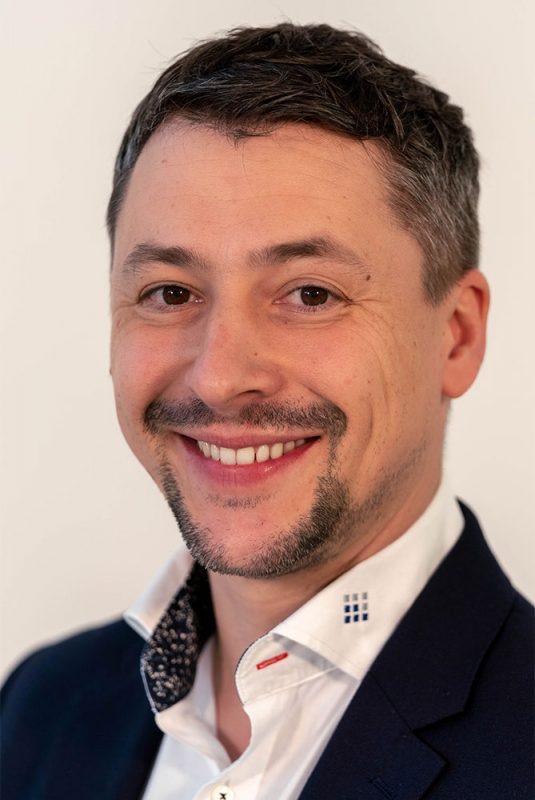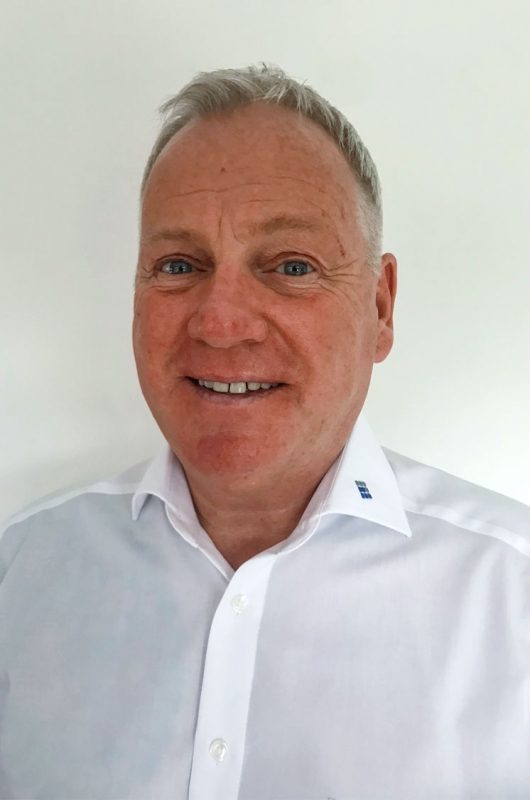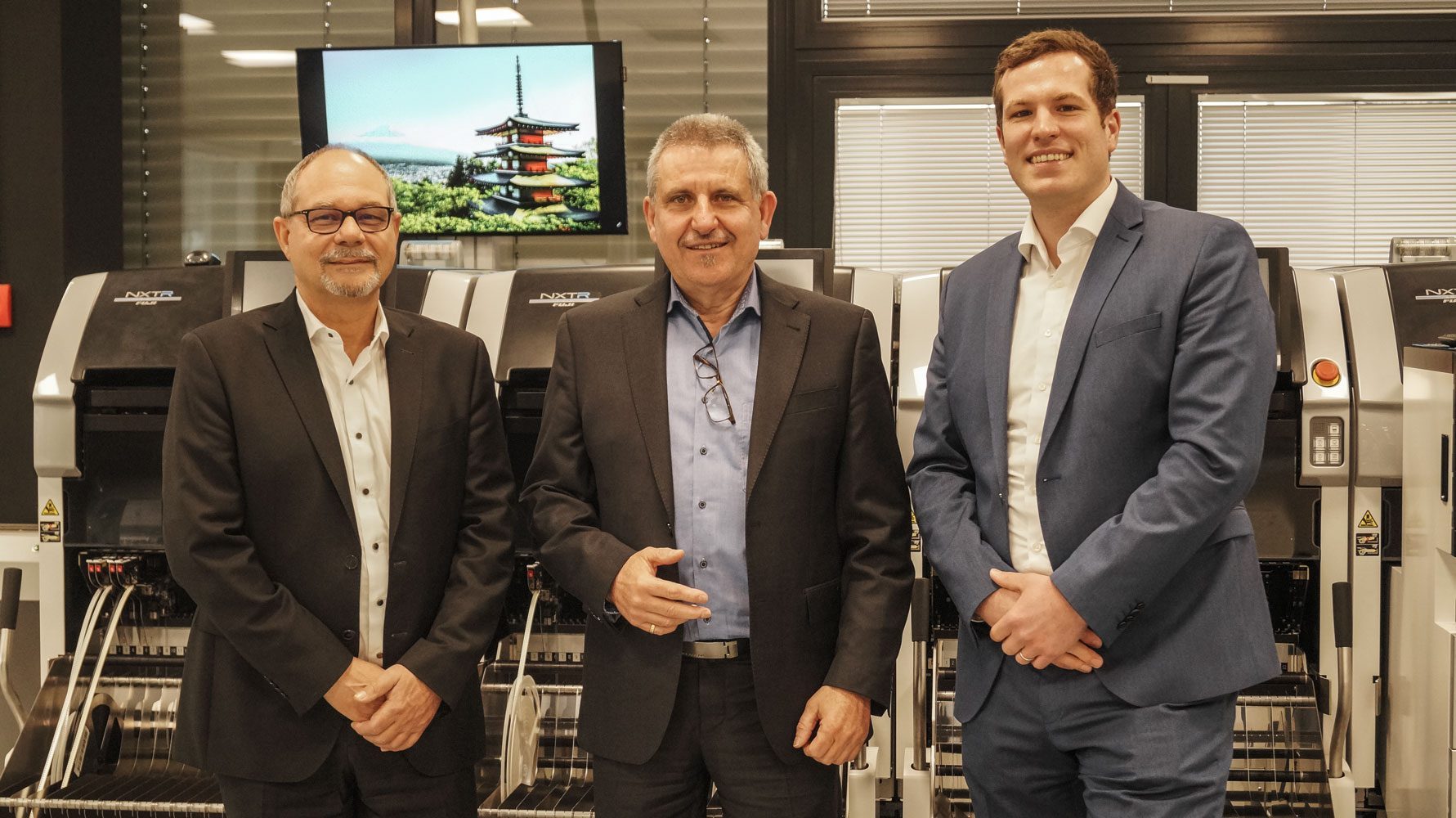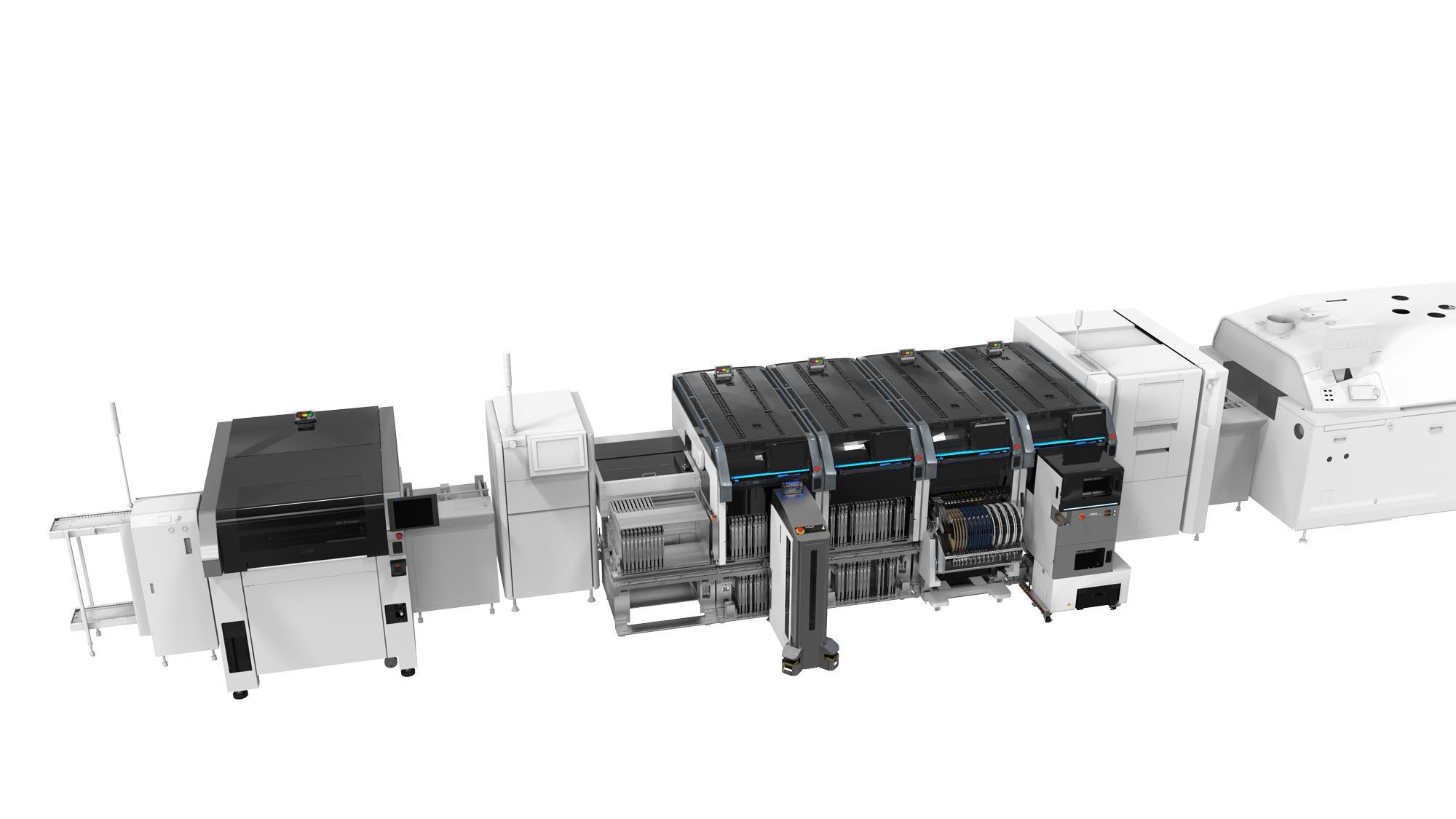Lawo brings error rate to near zero at higher placement speed with FUJI production line
Machine for high-mix production equips smallest component size with the diameter of two human hairs
Kelsterbach, October 18th, 2022 – Placing around 30,000 components per hour – this is what Lawo is able to do with its new high-precision SMD production line from FUJI EUROPE CORPORATION (www.fuji-euro.de). The AIMEX IIIc machine platform used is designed for high-mix production – down to the smallest component size EIA 01005, enabling it to place components with a size of 0.4 x 0.2 mm at Lawo. This corresponds to the diameter of two human hairs.
Lawo entwickelt, fertigt und vertreibt Netzwerk-, Control-, Audio- und Video-Systeme für Fernseh- und Radio-Produktionen, Industrie- sowie Live- und Theateranwendungen. Lawo develops, manufactures and distributes advanced network, control, audio and video systems for television and radio productions, industrial as well as live and theater applications. “Our products and solutions are used especially for highly critical events. There is hardly a picture or sound signal in the transmission of global sports events such as World Championships or Formula 1 that does not run through a Lawo system. Absolute signal quality and fail-safety are a must here. Therefore, we have to meet the highest quality standards at all times,” explains Andreas Hilmer, Chief Marketing Officer at Lawo.
Added to this is the high speed of innovation in the industry, which is driven not least by product development at Lawo. Thus, production must be continuously adapted technologically. “Our production technology must therefore offer maximum precision on the one hand and be able to react flexibly to changes on the other,” adds Andreas Hilmer.
In order to secure Lawo’s future as a manufacturer of high-quality hardware products and to continue to offer full vertical integration, the company has invested around one million euros in its production facility in Rastatt. Among other things, a SMD production line from FUJI will be used. Three new automatic placement machines of the AIMEX series create higher efficiency and precision in on-site production. The new machines can now place around 30,000 components per hour – down to the smallest component size EIA 01005.
Optimized processes and higher degrees of freedom in production
The AIMEX IIIc machine platform is designed for high-mix production and enables any type of production and changes in the package shapes used. It supports in one machine the processing of smallest chip components up to large components. All placement heads used are equipped with the “Intelligent Parts Sensor” (IPS). This ensures seamless monitoring from component pickup to placement. The DX heads are highly flexible and change tools fully automatically, from dispensing tasks to mechanical gripping tools for odd-shaped components and chip-shooter tasks. The systems also open up high flexibility for operators. For example, the placement heads can be changed or adapted to an optimum machine configuration in just a few minutes without tools.
“With the new SMD line, we were able to significantly increase our existing placement capacity and quality. New degrees of freedom are also possible in terms of flexibility, precision and vertical range of manufacture. Thanks to the new production line, which also includes automated space-saving component storage cabinets and an integrated vapor phase soldering oven, we have been able to reduce the error rate to almost zero – and at significantly higher placement speed. In addition, the systems are highly flexible and expandable, which also gives us valuable room to maneuver for the future,” explains Andreas Hilmer.
The various 773 sItower is used as a production supply warehouse for the production line. It is able to accommodate 773 individual SMD reels from 7″ to 15″ and can be expanded to a capacity of up to 1,070 SMD reels via SmartCarrier boxes. In addition, the design of the 7″ and 13″ storage locations of the tower can be individually configured for diameter and belt width.





